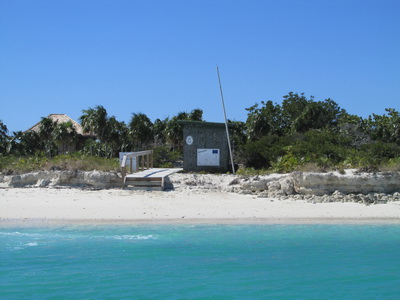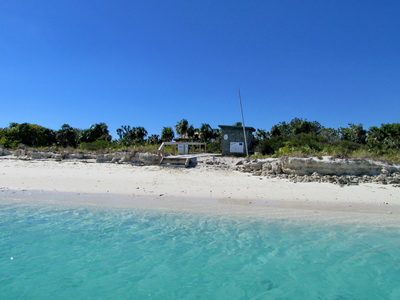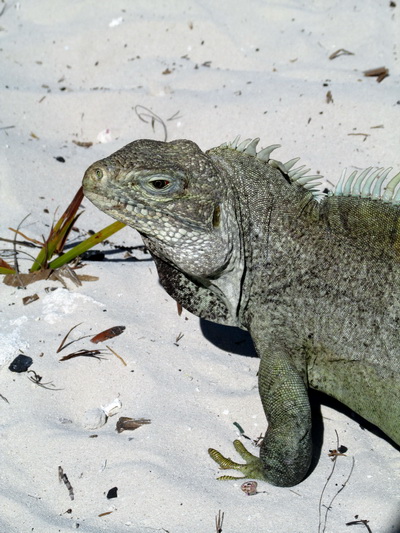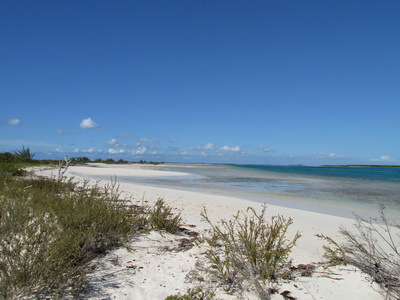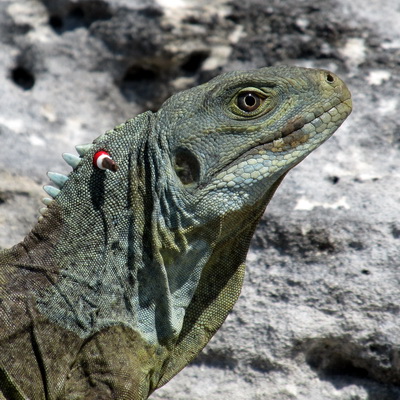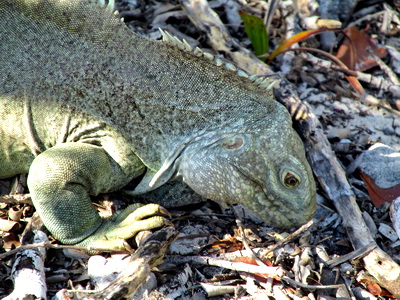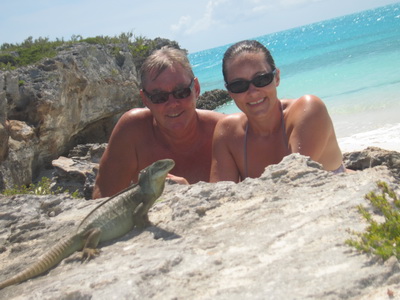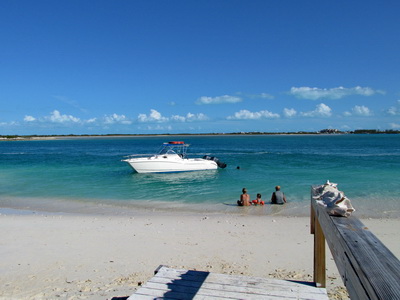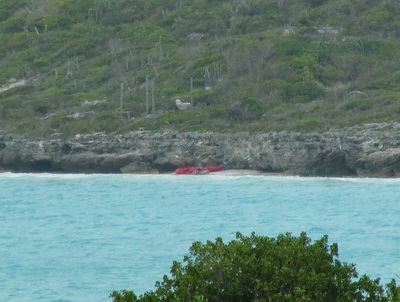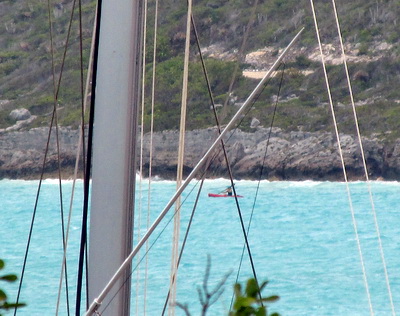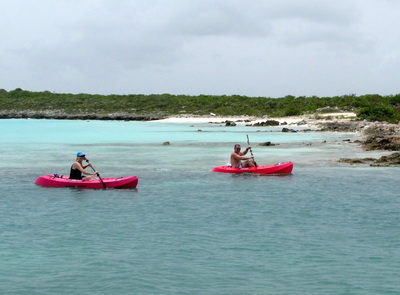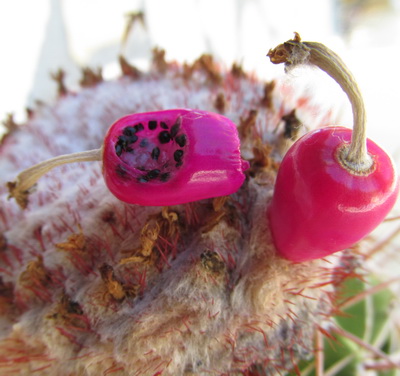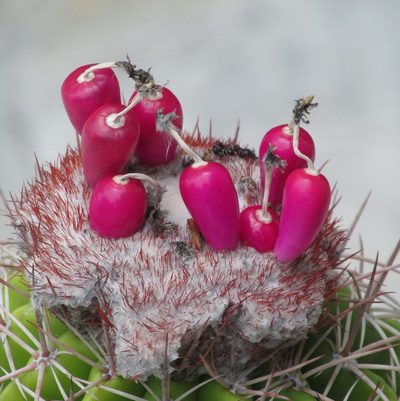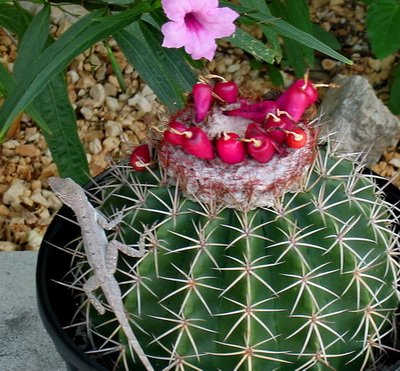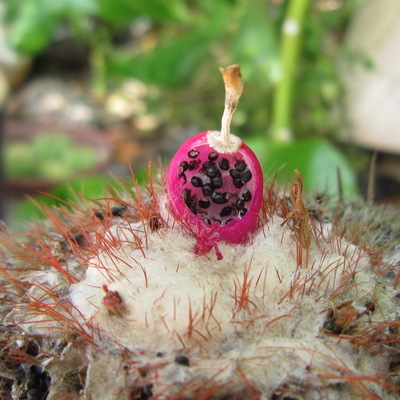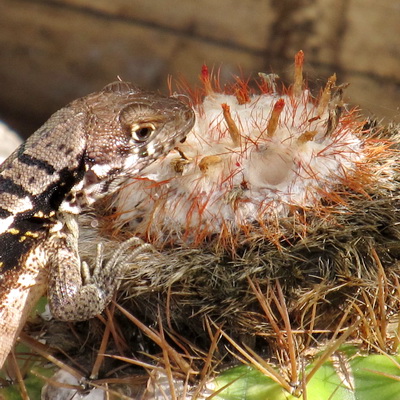The nature preserve of Little Water Cay is locally known as ‘Iguana Island’. This small island, or cay, is home to the few remaining Rock Iguanas that used to live on most of the islands in the Turks and Caicos. The Turks and Caicos Rock Iguana or Cyclura Carinata is now classified as endangered. At one time they lived on all the islands but the introduction of cats and dogs by humans led to their rapid decline and extinction on the other islands.
Little Water Cay is approximately 116 acres and has two small interior ponds that are surrounded by many native plants. This little cay is home to between 2,000 and 3,000 Rock Iguanas. In 2002, hundreds of iguanas were moved from islands that had larger populations to four uninhabited cays where they could be safe and multiply. Pine Cay is a good example of how fast populations can decline. In the 1970’s a population of some 15,000 iguanas was completely destroyed within five years by a mere handful of dogs and cats brought in by hotel workers.
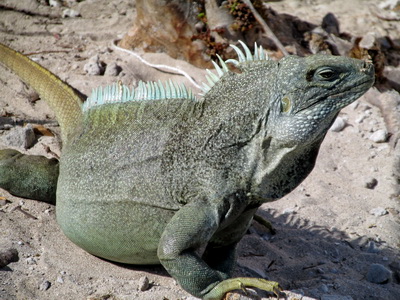
Some iguanas will come out and greet you while others hide in shallow burrows dug in the sand or under rocks.
You will notice that the iguanas on Little Water Cay have been tagged with coloured beads by scientists and researchers who use this harmless procedure to get information on the iguanas’ life span, survival and reproductive rate as well as eating, mating habits and individual growth rates. These coloured glass beads correspond to different numbers. Rock Iguanas are basically herbivorous and eat leaves, flowers, and fruits from many different plant species including Sea Grapes and Seven-year Apple to name a couple of favourites.
Please remember that the boardwalk was built in order to protect the iguanas. All visitors are not allowed to step off the walkway and can view the Rock Iguanas, the fine-powder beaches, red mangroves, small lakes, and scenery. A small entry fee goes toward preservation efforts currently in progress.
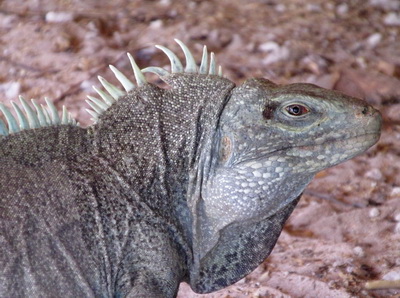
The Rock iguana's basic colour can range from green to brownish grey, usually patterned by darker markings.
Make sure you put a visit to Little Water Cay and the Rock Iguanas on your list of things to do. The kids will love it!
Marta
http://www.harbourclubvillas.com

